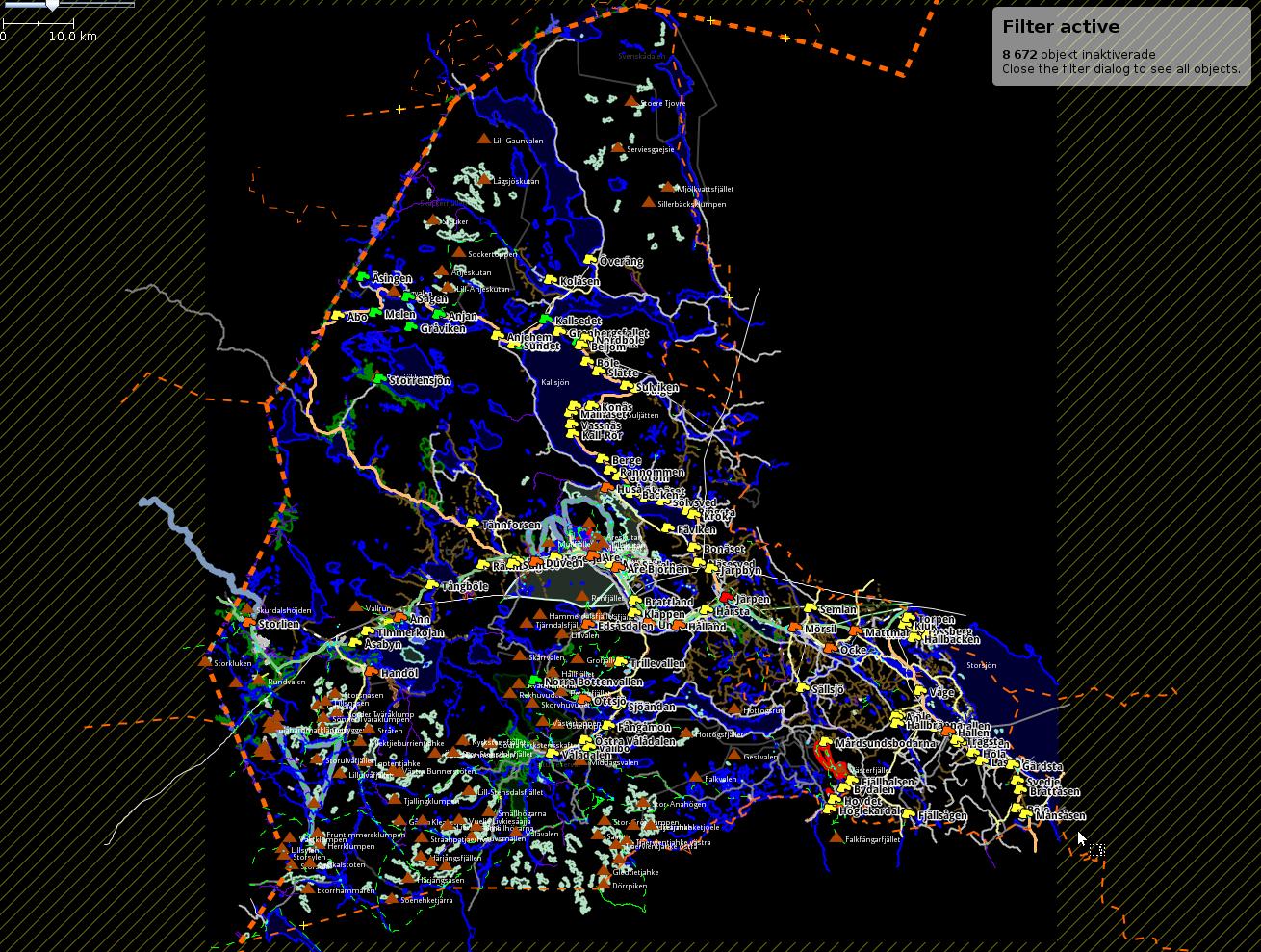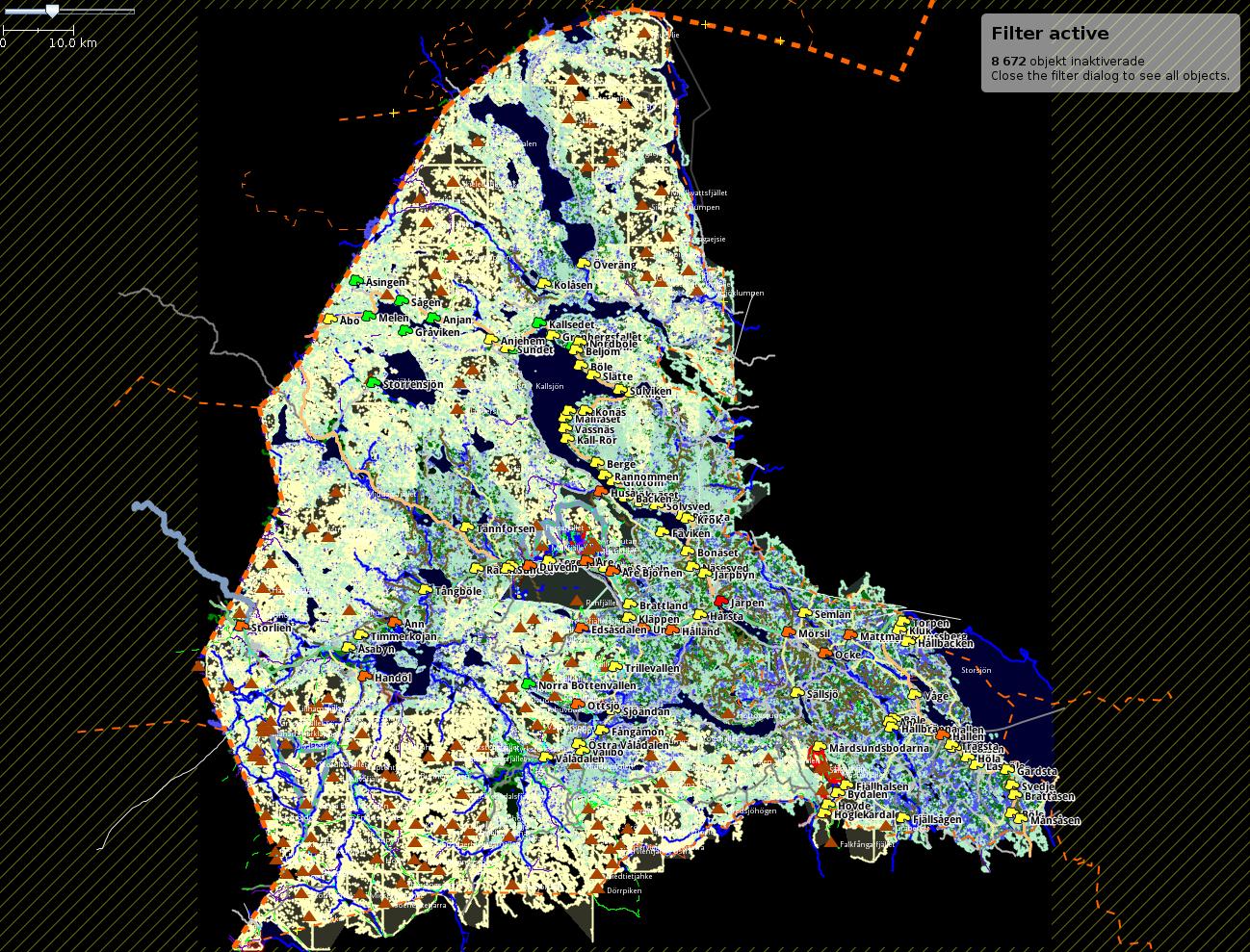Introduction
The majority of main roads (classified as motorways and primary roads)
are already present in OpenStreetMap (OSM) for a lot of countries. The primary
roads of Europe, Asia and Americas are likely to be fully covered.
But a multitude of the last mile roads are still missing. Roads such …
Continue reading »
Problem statement
Suppose you import a point to the map, representable as a single node. Like a
shelter, a picnic table, a bench or anything else. An imprecision in points
coordinates or in borders of water features already placed on the map may lead to
situation when a node gets …
Continue reading »
Around March 2019 I started work to import a large chunk of open data into
Openstreetmap. Specifically, to improve the landcover coverage of Sweden. Mostly
it concerned areas and features of forest, farmland, wetland, and highland marshes.
This post continues and somewhat concludes the series of thoughts I’ve
documented …
Continue reading »
The text below is the first revision of the new Openstreetmap data import plan.
The latest state of the document can be found on the OSM wiki page. It is likely to receive several updates over the
time as the project goes, but the technical aspects of the process are …
Continue reading »
Här är några detaljer och problem som upptäcktes efter min uppladdning på
nya vindskyddspunkter till OSM-kartan.
- Det visade sig vara möjligt att jämföra vindskyddens positioner
mot Lantmäteriets terrängkartan där ett stort antal vindskydd är
markerade med röda trekanter. JOSM har nämligen den kartan som underlagslager.
- Jag har bytt “comment …
Continue reading »
Datakällor
 .
.
Jag stötte på en karta med flera markerade vindskydd, ofta med utförliga kommentarer.
Jag beslutade att importera de saknade noderna in i Openstreetmap.
Karta: https://www.google.com/maps/d/u/0/viewer?mid=1doLXXvokOtiMzthVz0SLFjEPmD4.
Facebook-gruppen: https://www.facebook.com/groups/vindskyddinorden/
Databearbetning
Först behöver man “utvinna” informationen och …
Continue reading »
Jag har Garmin Etrex 25t som min nuvarande navigationsenhet. Efter en slumpmässig
enhetens omställning dök oändliga Geocaches upp överallt på kartan. Jo, jag
ägande mig åt Geocachingsspelet tidigare och jag kommer troligen att spela någon
gång i framtiden. Men då föredrar jag ladda upp enstaka punkter i in enheten när …
Continue reading »
Det tog mig nästan två månader att slutföra NMD2018-dataimporten för Åre kommun.
Importen bestod av hundratals rutor 0,1×0,1 grader var [1].
Så här såg OSM-datat för kommunen före importprocessen:

Inte mycket markanvändning fanns före.
Nu ser området så här ut efter [2]:

Vad gick bra
- Importen …
Continue reading »
This post continues where the previous one
left off.
After some time spent on processing and importing land cover data, I have
several ideas on how to further improve and streamline both the import process
and in general work with land cover features in JOSM.
Continue reading »
This is the third part of summarizing my experience with conflation
of land cover data for Sweden. More examples of practical problems and ways to
address them follow.
The same or similar problems may or may not arise during
other imports of closed (multi)polygons in the future, so tips …
Continue reading »
The whole premise of the land cover import for Sweden [1] bases on the idea to
take the raster map of land cover and to covert it into the OSM format. This
results in new map features that are essentially closed (multi)polygons and tags.
These new features are then …
Continue reading »
Land cover geographic data is what is mostly represented as landuse=* in
the OSM database. Other tagging schemes e.g. landcover=* also exist.
During the ongoing land cover import for Sweden [1] I learned several things that
were not documented anywhere in the OSM wiki or elsewhere, as far as …
Continue reading »
 .
.
